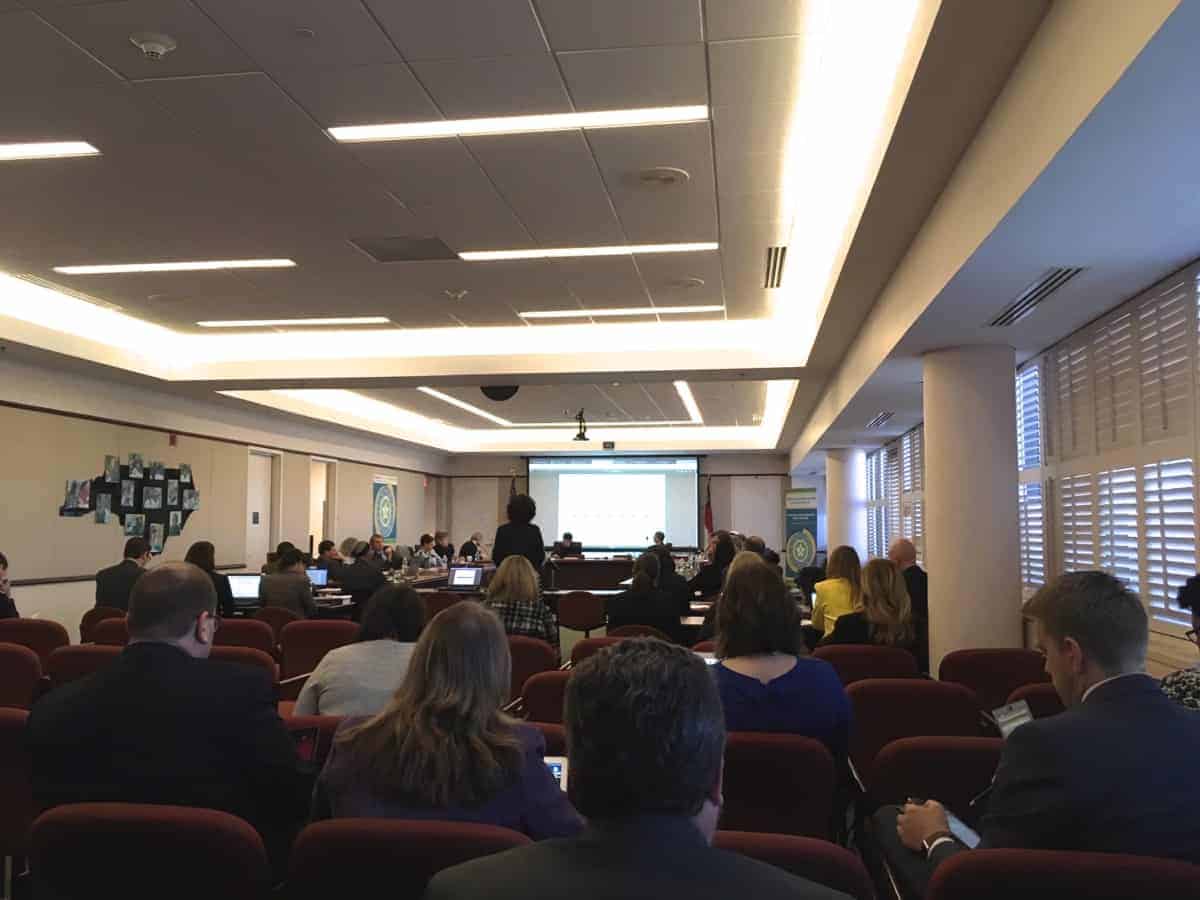North Carolina has spent more than $150 million on Read to Achieve in an effort to make sure the state’s elementary students know how to read, but a recent report from the Friday Institute for Educational Innovation has found that the money has largely produced no results.
The State Board of Education focused on reading during its issues session this week, hearing from multiple experts about reading in the state, Read to Achieve, and efforts to bolster how teachers learn to instruct students in reading.
The takeaway was that North Carolina students are faring poorly, Read to Achieve isn’t reversing the trend, and the state needs to intervene in children’s lives even earlier than it is now.
“We’re either flatlined or moving back,” Board member JB Buxton said of the state’s efforts to improve reading.
Read to Achieve is an initiative that came out of the legislature back in 2012. It attempts to make sure students don’t progress beyond third grade without being able to read, using additional support, including reading camps, to get the students where they need to be.
But Trip Stallings of the Friday Institute, who led the analysis of the program, said the impact of the program has been “null,” and he emphasized that working on reading skills needs to happen early in North Carolina.
“The most important thing you all can consider is those earlier grade interventions,” he said.
Only 52 percent of first graders in North Carolina demonstrate reading comprehension, according to another report presented by Tara Galloway, director of K-3 Literacy at the State Department of Public Instruction. That number is 56 percent for second grade students, and the pass rate on third-grade end-of-year reading tests is only 55.9 percent. Over time, that pass rate has declined.
Stallings mentioned some limits to the analysis of Read to Achieve performed by the Friday Institute, including the fact that it is a state-wide analysis and thus doesn’t necessarily account for how individual districts are doing with the initiative. He mentioned that the analysis doesn’t tell the state anything about how the very lowest-performing students do after Read to Achieve interventions.
He also said that one of the limits to Read to Achieve is that there isn’t necessarily uniformity to how it is implemented across the state’s many districts. He likened the roll out of the initiative to having 115 different pilot programs all operating under different “parameters.” One thing he suggested the state could do moving forward is find districts that are successfully utilizing Read to Achieve and scale their strategies to the rest of the state.
Galloway said that DPI isn’t suggesting any legislative changes to address the failure of Read to Achieve but is instead focusing on tweaking implementation through collaboration with teacher preparation programs, reading camp challenges, early intervention, instruction, and parent involvement.
Hear a podcast with Stallings about the Read to Achieve analysis.
The State Board also heard from the UNC System about a new teacher preparation program advisory group that is working on improving the way the state’s public teacher training programs operate. The advisory group was created following a report commissioned by then UNC-System President Margaret Spellings. The report found there was room for improvement in the state’s educator preparation programs, particularly in the area of literacy.
The advisory group, made up of education experts from around the state — including from educator preparation programs — is working on strategies to improve teacher training programs. One of those is creating communities of practice that will bring together educator preparation program faculty and leaders to focus on specific issues.
The first community of practice will focus on early learning and literacy and is in the process of forming now.
State Board Member Wayne McDevitt emphasized to his fellow members this week that transforming North Carolina’s reading efforts isn’t something that is going to happen easily or overnight.
“I just want to remind me and others that this will be a very formidable adversary,” he said, adding that success would be incremental. “It’s not a win you’re going to put on a bumper sticker.”
He said there are homes where there isn’t a single book in the house and that early intervention in reading is something that really needs to go all the way back to birth and to children being exposed to reading in the home.
“We have to be passionate about this as a state,” he said.
Annual Charter School Report
The State Board also heard the annual charter school report, which updated them on how the state’s charters are doing.
According to the report, the state has 184 charter schools right now, with 22 in the process of opening. The state received 35 charter applications last year.
Dave Machado, director of the office of charter schools, said that the percentage of students of color applying to charter schools is consistently rising over time.
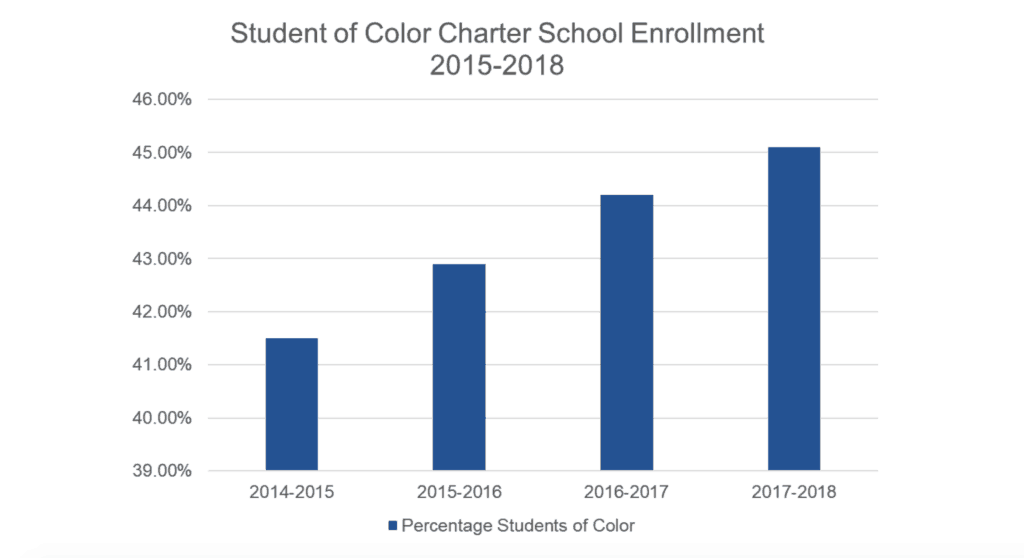

The percent of economically disadvantaged students, however, is fluctuating more over time according to the report.
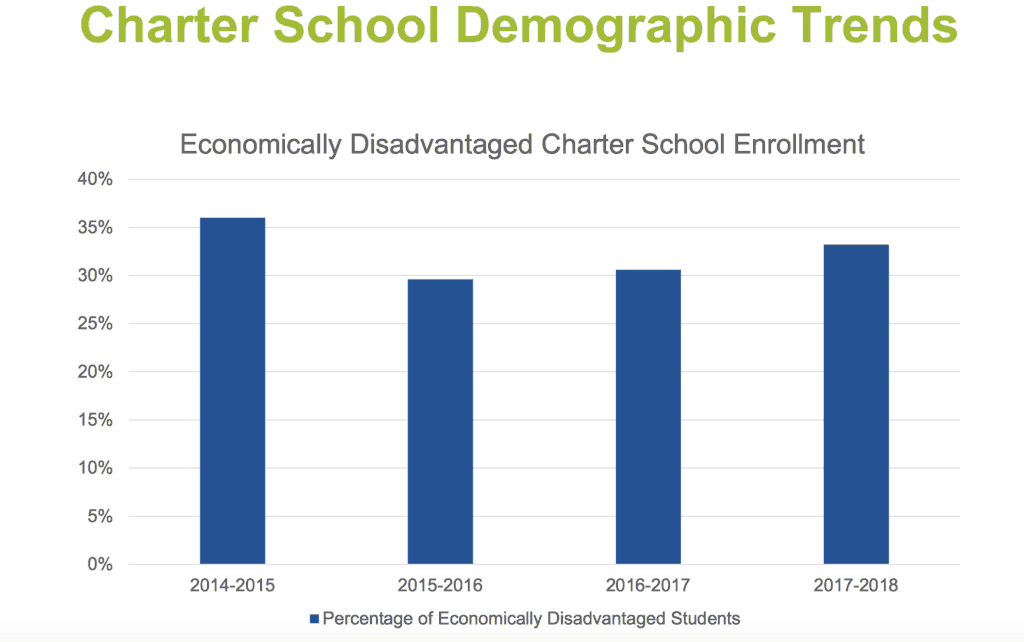

Machado noted that the number of charter schools receiving school performance grades of D or F has decreased for the fifth year in a row, and the number of schools exceeding growth increased from 36 in 2016-17 to 46 the following year.
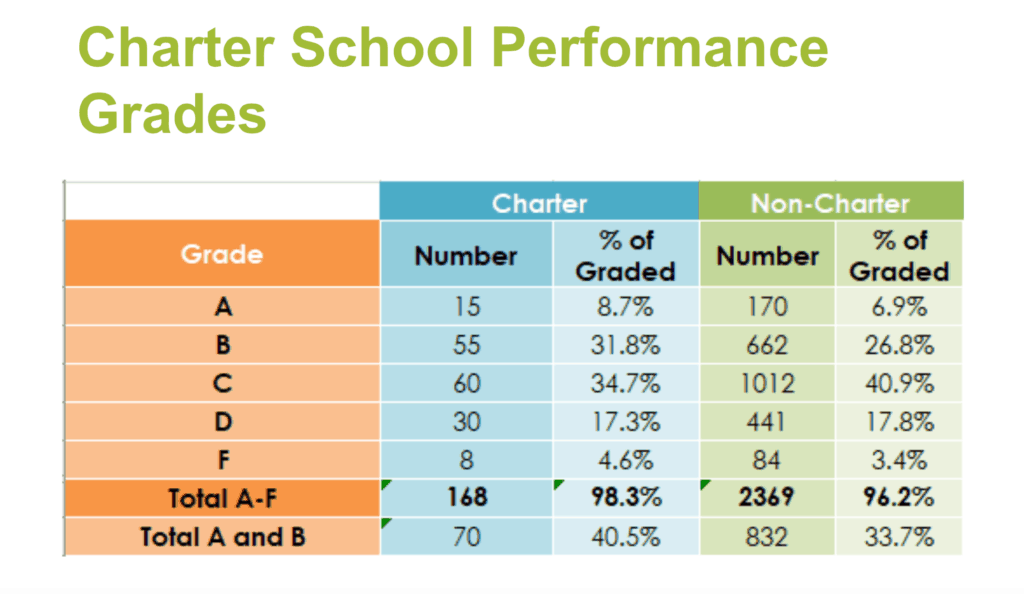

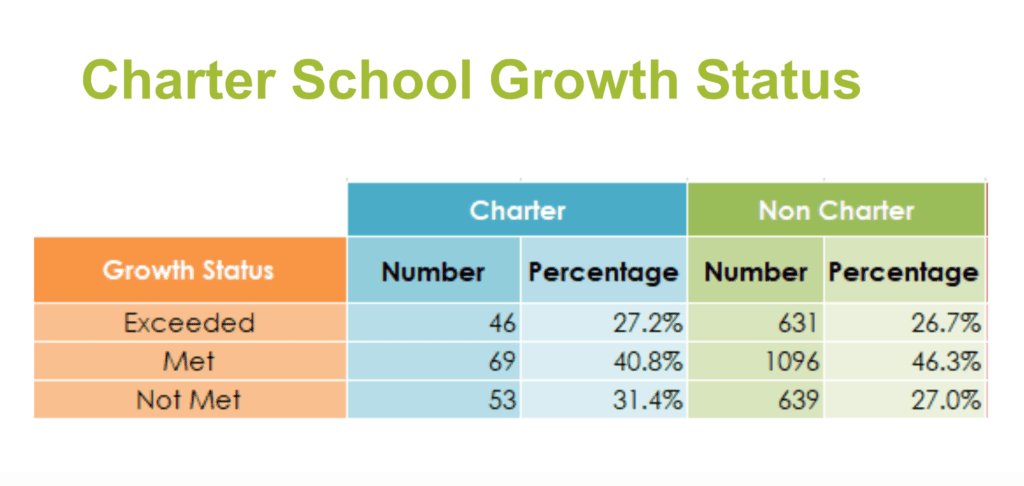

Carver Heights Elementary School and the ISD
The State Board of Education granted restart status to Carver Heights Elementary School in Wayne County on Thursday. The school was targeted by the controversial Innovative School District (ISD) to join its ranks next year, but legislative action just before the holidays allowed the state the flexibility to grant restart status to the school instead and forgo the addition of a second school to the ISD next year. Restart grants charter-like flexibility to continually low-performing schools.
“Yesterday’s decision was a vote of confidence in the ongoing school improvement efforts currently in place at Carver Heights Elementary,” said Wayne County Schools Superintendent Michael Dunsmore in a press release. “I would be remiss if I did not thank our local delegation and the bi-partisan support for Carver Heights Elementary, together with our State Board of Education and Department of Public Instruction. The recent legislative changes gave the State Board of Education the legal ability to accept our Restart application and to allow Wayne County Public Schools to retain local control of the school as we work to improve its academic trajectory.”
Carver Heights’ first full school year under restart will be next year. If it fails to make the necessary gains under restart, it will have to go into the ISD in the 2021 school year.
“I am elated about the State Board’s decision,” said Carver Heights principal Patrice Faison in a press release. “Since November, my teachers have stepped up to the challenge of implementing powerful changes that will turn our school around. While there is still much work to be done, it is validating that our efforts have garnered the support of both the North Carolina General Assembly and the State Board of Education. Through both the Board’s and the legislature’s actions over the past few weeks, Carver Heights now has the opportunity to prove to everyone that our students and staff have the ability to do great things.”
The Achievement School District (ASD) bill — later renamed the Innovative School District (ISD) — was passed during the 2016 General Assembly short session. At the heart of the legislation is the creation of a district which will eventually include five low-performing schools from around the state. The schools can be turned over to outside operators, including for-profit charter management organizations, though the definition of who can operate one of these schools has broadened over time.
Last year, Robeson County’s Southside/Ashpole Elementary was picked to be the first school in the ISD. It started in the new district this fall under the operation of a non-profit charter management organization, Charlotte-based Achievement for All Children.
Read more about Wayne County’s attempts to resist the ISD here, here, here, and here.
The NC Center for Public Policy Research has a contract with James Ford’s consulting company, Filling the Gap Education Consultants, LLC, to conduct a three-year study of inequity in education across North Carolina.
